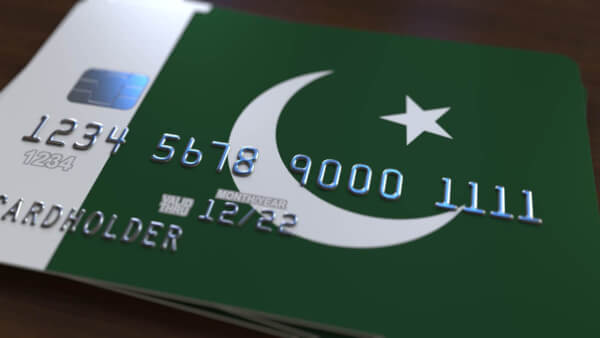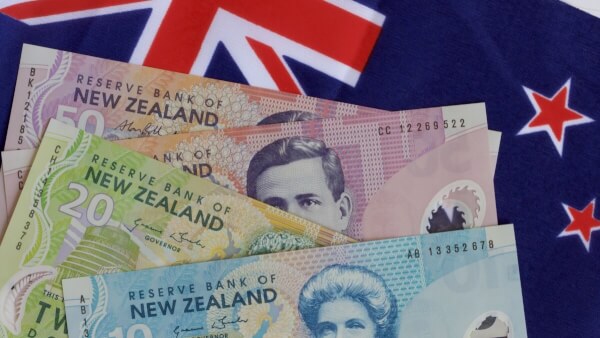A list of the top banks in Singapore
A list of the top banks in Singapore, including DBS, OCBC, UOB, Maybank, Bank of Singapore, HSBC and Citibank.

Just moved to the US from the UK, or planning to relocate there soon? Perhaps you’ll soon be studying there, or are planning an exciting gap year adventure along Route 66.
Whatever your reasons for visiting the US, one of the first things you’ll need is a bank account. If you want to earn money during your trip, pay for things or receive money from home, it’s a must-have.
In this guide, we’ll cover all the essentials you need to know about opening a bank account in the US. This includes the documents you’ll need, how to choose the right bank and crucially, how much a US bank account may cost you.
And, if you’re looking for alternative ways to manage your money abroad, check out the Wise account from the money services provider Wise. It’s not a bank account but offers many great features, including sending money overseas for low, transparent fees, spending abroad with a Wise debit card, and more.
Please see the Terms of Use for your region or visit Wise fees & pricing for the most up-to-date information on pricing and fees.
The documentation you’ll need to support your application for a bank account can vary. It depends on the bank, as well as the US state.
But generally, here are the documents you should need to open a bank account in the US:¹
Crucially, one thing you’ll nearly always be asked for is a Social Security Number (SSN). This can be a real hurdle for non-residents and non-citizens, but it’s not insurmountable.
Some banks will accept applications from foreigners who don’t have, and aren’t eligible for an SSN.
Others may accept something called an ITIN², in place of an SSN. This stands for Individual Taxpayer Identification Number, and it’s used to help foreigners or people not eligible for an SSN to comply with US tax laws.
You can apply for an ITIN if you’re a non-citizen and non-resident of the US, if you’ll be filing a US tax return or are married to a US citizen, along with a number of other eligibility criteria.³
Unfortunately, pretty much all banks in the US require at least one visit in person to open a bank account.² It’s just standard procedure over there.
This means that although you may be able to start the process of opening a bank account online, you’ll still need to visit a local branch.
It’s usually for the purposes of verifying your identity, but if you’re a non-resident, you may also discuss the banking options available to you without an SSN. This can be really helpful, as a customer service representative can talk you through your options.
You can also pursue another strategy - opening an international account with your existing bank or another UK bank which has branches in the US, or use alternative money services providers to manage your money, like Wise.
This can make it easier to open an account, especially if you want or need to do it online. To find out whether you meet the requirements for an international account (which can be quite stringent in some cases), get in touch with your bank or provider.
There are a few difficulties involved in opening a bank account in the US from overseas. If you live in the UK but are a US citizen, you may be able to start the process of applying online.
But if you’re not a US citizen, you’re likely to have to visit a branch in person – which means flying to the US and making an appointment with your local branch. This is not too tricky if you already plan to visit for work, business or a holiday, but it’s a long way to go otherwise.
The other issue to overcome is being accepted for a bank account in the US without a Social Security Number.
You’ll find that you probably won’t have access to the same banking market as US citizens. You should still be able to get a personal or business bank account as a non-citizen, but you’ll be limited to banks which offer specific bank accounts for customers in your circumstances.

The US is home to some of the largest and most important financial institutions in the world.
There are a huge number of banks to choose from in the US, but the most famous ones are the following.
The largest bank in the United States⁴, ‘Chase’ bank offers a range of accounts for everyday banking, kids and students, and premium users too.
Its everyday checking (current) accounts include its most popular, Chase Total Checking, which charges no fees if you deposit more than $500 a month, Chase Secure Banking and Chase Premier Plus Checking.
Chase also offers checking accounts for kids and students: Chase First Banking (ages 6-17), Chase High School Checking (ages 13-17), and Chase College Checking (ages 17-24). Premium customers can opt for Chase Sapphire Banking or Chase Private Client Checking.
For corporate customers, JPMorgan Chase offers a choice of business checking accounts, including Chase Business Complete Banking account for small to mid-sized companies and Chase Performance Business Checking account for mid-sized companies and up.
| 📚 Read more: How to open a Chase Bank account: full guide |
|---|
Bank of America, just behind JPMorgan Chase in the list of America’s largest banks⁴, offers one main product for consumer banking, Advantage.
But, you can choose one of three checking accounts under the Advantage umbrella. These are Advantage Plus Checking for everyday banking, the checkless, flexible Advantage SafeBalance or the perk-stuffed Advantage Relationship (although you’ll need a higher balance to get the benefits).
While Bank of America doesn’t offer a dedicated student account, students can access some Advantage accounts with waived monthly fees. Meanwhile, for business customers, there’s the Business Fundamentals Banking account for small organisations or Business Advantage Relationship for larger or growing companies.
| 📚 Read more: Bank of America Review: Is Bank of America a Good Bank? |
|---|
Citibank’s checking accounts are based on relationship tiers – in a nutshell, how much money on average you’re keeping with Citibank. With the lowest tier, you won’t need a certain balance on the account, and the monthly fees can be waived when meeting certain requirements, like depositing money into your account regularly.
There are also premium packages available, based on the combined average monthly balance: Citi Priority (starting from $30,000), Citigold (starting from $180,000), and Citigold Private Client (starting from $800,000).
Unfortunately, Citibank doesn’t offer a dedicated account for students.
Small businesses in particular are well catered for at Citibank, as there’s a tiered range of flexible Citibank’s business checking accounts to choose from.
| 📚 Read more: Opening a Citibank account for foreigners: requirements and more |
|---|
You can open an Everyday Checking account with Wells Fargo with just $25, and if you’re a student aged 17-24, you can even swerve the monthly service fee. Alternatively, meet a few pay-in and balance criteria and you can also avoid the $10 monthly charge.
There’s also Clear Access Banking, another checking account targeting students and young people. It offers the same option to waive the monthly fee if you meet certain criteria. Plus, it’s designed specifically with digital-loving users in mind, with a great mobile banking app, contactless debit card and other digital banking features.
There are also dedicated business checking accounts with Wells Fargo for businesses of all sizes: Initiate, Navigate, and Optimize.
| 📚 Read more: Wells Fargo non resident account guide |
|---|
The above are some of the largest banks in the US, but they’re far from the only ones. There are literally thousands to choose from.
Some of the others it could be worth looking into include Capital One and Axos Bank (formerly known as Bank of Internet USA).
Capital One’s 360 Checking account has no fees and no minimum balance, and it offers 24/7 mobile banking. There are also more than 70,000 fee-free Capital One ATMs in the US.⁵
Over at Axos Bank, there’s a choice of personal checking accounts offering perks such as low or no fees, cashback on transactions and unlimited ATM withdrawals.⁶
You can also look into online banks and alternative money services providers. These include SoFi, Quontic, Varo Money, Ally Bank, and Wise. If you like to manage your money on the move or via an app, and you only need simple features, a digital bank could suit your needs perfectly.
Many banks in the US offer specific services and accounts tailored to international students so they can send and receive money from family abroad. While some banks don’t have a dedicated student account, the regular accounts’ fees can be waived if you’re a student – it’s best to check this with each bank separately.
Some of the main banks providing international student accounts are Bank of America, Wells Fargo, TD Bank, and Capital One.
| 📚 Read more: The best UK bank accounts for international students |
|---|
There are a few crucial fees and charges to know about before you open a bank account in the US. However, these charges vary based on the bank you choose, the account’s specifics, and even how much you’re depositing into the account each month.
Firstly, monthly service fees. Most banks charge these, but you can often waive these if you meet certain criteria. For example, if you pay in a certain amount each month or maintain a minimum balance.
You should also look out for ATM withdrawal fees, which are usually only charged if you use an ATM from a bank other than your own.
If you have a US bank account and are withdrawing money from an ATM overseas, check whether there’s a charge before going ahead. Always choose the local currency (rather than your home currency) or you could get stung with a terrible exchange rate.
Other fees include a charge for early closure of the account. Check the small print to find out how long your bank requires you to keep the account open for before you can close it or switch.
Lastly, there are international transfer fees. These are nearly always super expensive when you use your bank to send money overseas. To add insult to injury, unfavourable exchange rates can eat into your money even more.
| 📚 Read more: Steps to making an international transfer |
|---|
Luckily, you aren’t stuck with your bank as your only option when managing your money while travelling abroad or sending international payments.
Open a Wise account online and you can start whizzing money around the world before you even set foot in the US. It’s not a bank account, but offers many similar features. You can get US account details* to use, so that friends, family and even employers and clients can pay you in US dollars like a local.
What’s more, you can get a Wise card to spend in over 150 countries, including in the US and the UK. It automatically converts your pounds into local currency using the fair mid-market exchange rate, only adding a tiny currency conversion fee – no foreign transaction fees, exchange rate mark-ups, or hidden fees.
*Eligibility is subject to verification of customer’s identity. Please see the Terms of Use for your region or visit Wise fees & pricing for the most up-to-date information on pricing and fees.
So, there you go - all you need to know about opening a bank account in the US. It can be tricky without that all-important Social Security Number, and it would be lovely if you could complete the whole process online from your sofa here in the UK.
But there are ways around these hurdles, starting with contacting your chosen bank to find out how they can help you.
The best of luck on your American adventure!
Sources used for this article:
Sources checked on 20-Dec-2023.
*Please see terms of use and product availability for your region or visit Wise fees and pricing for the most up to date pricing and fee information.
This publication is provided for general information purposes and does not constitute legal, tax or other professional advice from Wise Payments Limited or its subsidiaries and its affiliates, and it is not intended as a substitute for obtaining advice from a financial advisor or any other professional.
We make no representations, warranties or guarantees, whether expressed or implied, that the content in the publication is accurate, complete or up to date.

A list of the top banks in Singapore, including DBS, OCBC, UOB, Maybank, Bank of Singapore, HSBC and Citibank.

A list of the top banks in Pakistan, including National Bank of Pakistan, Habib Bank, United Bank, MCB Bank and Allied Bank.

A list of the top banks in the US, including JPMorgan Chase, Bank of America, Wells Fargo, Citibank and U.S. Bank.

A list of the top banks in Andorra, including Andbank, Creand and MoraBanc.

A list of the top banks in New Zealand, including ANZ, ASB, Westpac, BNZ, Kiwibank and TSB Bank.

A helpful guide to the Trading 212 Multi-Currency Account, including what it is, how it works, fees and more.